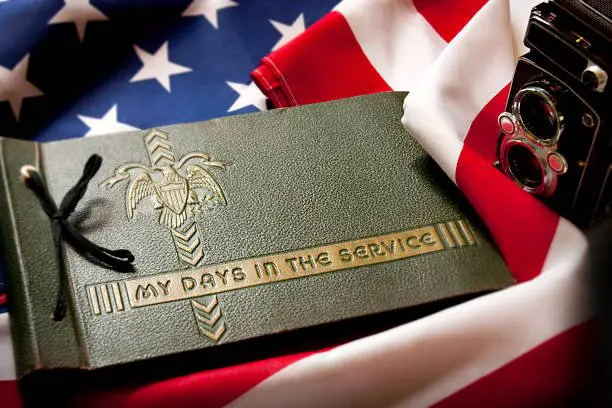Your Guide to GI Bill Scholarships and Grants 2024

Look through a world of educational possibilities with GI Bill scholarships and grants. Our comprehensive guide navigates you through the application process, eligibility criteria, and tips to maximize your benefits. Secure your future with financial aid tailored for veterans who embark on your academic journey today.
For veterans and their dependents who may not qualify for GI Bill benefits due to various reasons, scholarships offer valuable assistance. There are two main types: fenced and non-fenced.
A fenced scholarship is exclusively allocated to tuition and is often paid directly to the school. On the other hand, a non-fenced scholarship can be used for any school-related expenses.
Regardless of the type, incorporating a scholarship alongside the Post9/11 GI Bill or any other GI Bill program significantly increases the financial support available. Unless you have a full-ride scholarship covering the entire cost of tuition or both tuition and housing, the GI Bill bridges the gap between what the scholarship covers and the total school expenses. Additionally, the GI Bill provides a yearly $1,000 book stipend and a housing allowance, an aspect not typically covered by most scholarships.
For instance, if you receive a $5,000 fenced scholarship for a semester with tuition totaling $9,000, the GI Bill covers the $4,000 tuition difference and provides a book stipend and housing allowance. The impact is even more substantial for private school attendees.
In the case of a $5,000 nonfenced scholarship, the GI Bill covers the entire tuition, along with the book stipend and housing allowance. The $5,000 from the scholarship becomes yours to utilize as needed.
In essence, scholarships prove to be a valuable complement to the GI Bill, ensuring a more significant financial benefit, even when the GI Bill is in place.

Gi Bill scholarship and grants Eligibility criteria
1. Military Service Requirement:
Detailing the minimum length of activity service.
Reservists and National Guard members’ eligibility criteria.
2. Educational Background:
High school diploma or equivalent requirements.
Acceptable enrollment status (full-time, part-time).
3. Type of GI Bill:
Overview of different GI Bill programs (Post9/11, Montgomery, etc.).
Eligibility criteria are specific to each GI Bill type.
4. Character of Discharge:
How discharge type can impact eligibility.
Steps for those with less than honorable discharges.
5. Time Frame for Eligibility:
Limitations on the period during which benefits can be claimed.
Extensions or changes based on specific circumstances.
6. Pursuing Approved Programs:
Ensuring the chosen education program is eligible.
Criteria for degree-granting institutions, vocational schools, and on-the-job training.
7. Citizenship and Residency:
U.S. citizenship or eligible noncitizen requirements.
Residency considerations for state-specific benefits.
8. GI Bill Transferability:
Guidelines for transferring benefits to dependents.
Criteria for transferring while in service or after retirement.
9. Financial Need and Income Limitations:
Understanding income thresholds for certain GI Bill programs.
How financial need may impact eligibility for additional aid.
10. Maintaining Satisfactory Academic Progress:
Expectations for academic performance.
Consequences and steps to regain eligibility if academic standards are not met.

How to apply for the Gi Bill scholarship and grants
1. Determine Your Eligibility:
Ensure you meet the eligibility criteria for the specific GI Bill program you are interested in.
2. Create a VA.gov Account:
Visit the official VA.gov website and create an account if you don’t have one.
3. Gather Required Documentation:
Collect necessary documents, including proof of military service, education history, and personal identification.
4. Select Your GI Bill Program:
Choose the GI Bill program that aligns with your educational goals.
5. Complete the Application:
Fill out the online application form on the VA.gov website, providing accurate and detailed information.
6. Submit Your Application:
Review your application carefully before submission to ensure accuracy.
Submit the application through the online portal.
7. Wait for Processing:
Be patient during the processing period, as it may take some time for the VA to review and approve your application.
8. Receive Certificate of Eligibility (COE):
Once approved, you will receive a Certificate of Eligibility outlining your benefits.
9. Provide COE to Educational Institutions:
Share your COE with your chosen educational institution to verify your eligibility for GI Bill benefits.
10. Monitor Your Benefits:
Stay informed about the status of your benefits and any updates or changes.
11. Contact VA for Assistance:
If you encounter issues or have questions, reach out to the VA’s helpline or visit a local VA office for guidance.

READ MORE: Unlocking Success with Federal Grants Management Handbook 2024.
Tips for maximizing Gi Bill benefits
1. Research Eligible Programs:
Explore educational programs that align with your career goals and are approved for GI Bill benefits.
2. Consider Yellow Ribbon Program:
Look into schools participating in the Yellow Ribbon Program to cover tuition costs exceeding the GI Bill cap.
3. Take Advantage of Transferability:
If eligible, consider transferring unused GI Bill benefits to your spouse or dependents.
4. Understand Housing Allowance:
Know the housing allowance rates for your location and plan your budget accordingly.
5. Optimize Yellow Ribbon Schools:
Choose Yellow Ribbon schools strategically to maximize tuition coverage and reduce out of pocket expenses.
6. Explore WorkStudy Opportunities:
Participate in the VA’s work study program to earn additional income while in school.
7. Use Tuition Assistance Programs:
Leverage tuition assistance programs offered by the military to supplement GI Bill benefits.
8. Conserve Benefits with CLEP Exams:
Consider taking CollegeLevel Examination Program (CLEP) exams to earn college credits and save GI Bill benefits.
9. Apply for Additional Scholarships:
Seek out and apply for additional scholarships to offset educational costs further.
10. Manage Course Load Wisely:
Plan your course load strategically to make the most of your benefits and avoid unnecessary expenses.
11. Explore Vocational Training Opportunities:
Consider vocational training programs eligible for GI Bill benefits as an alternative to traditional degree programs.
12. Utilize Veteran Resources:
Take advantage of on-campus veteran resource centers and support services to enhance your academic experience.
Frequently asked questions
Who is eligible for GI Bill benefits?
Eligibility is typically based on a veteran’s length and type of military service. Reservists and National Guard members may also qualify.
How do I apply for GI Bill benefits?
Create an account on VA.gov, gather the required documents, choose a GI Bill program, complete the online application, and submit. Await processing and receiving a Certificate of Eligibility.
Can I transfer GI Bill benefits to family members?
Yes, if you meet eligibility criteria, you can transfer benefits to your spouse or dependents.
What does the GI Bill cover?
The GI Bill covers tuition, fees, a monthly housing allowance, and a stipend for books and supplies. The Yellow Ribbon Program can help cover tuition costs exceeding the GI Bill cap.
How is the housing allowance calculated?
The housing allowance is based on the location of your educational institution. Rates are set by the U.S. Department of Veterans Affairs.
Can I use the GI Bill for online courses?
Yes, many GI Bill programs cover online courses. Ensure your chosen program is approved for VA benefits.
Are there time limitations for using GI Bill benefits?
Some programs have specific time frames for benefit usage. Extensions may be available based on circumstances.
Can I use the GI Bill for vocational training?
Yes, certain GI Bill programs cover approved vocational training programs.
What is the Yellow Ribbon Program, and how does it work?
The Yellow Ribbon Program helps cover tuition costs exceeding the GI Bill cap for private institutions. Participating schools enter into an agreement with the VA to contribute funds, and the VA matches the amount.
What support services are available for veterans on campus?
Many universities have veteran resource centers offering support services, counseling, and assistance with the transition to academic life. Check with your school’s Veterans Affairs office for details.
Conclusion on GI Bill Scholarships and Grants.
The GI Bill opens doors to educational opportunities for veterans, providing a pathway to personal and professional growth. By understanding the eligibility criteria, navigating the application process, and strategically maximizing benefits, veterans can embark on a fulfilling academic journey. Whether pursuing traditional degrees, vocational training, or online courses, the GI Bill offers financial support tailored to the unique needs of those who have served our country.
As veterans navigate their educational paths, it’s crucial to stay informed, leverage additional resources, and explore opportunities like the Yellow Ribbon Program. The commitment to education is not only an investment in individual success but also a testament to the enduring spirit of service.



